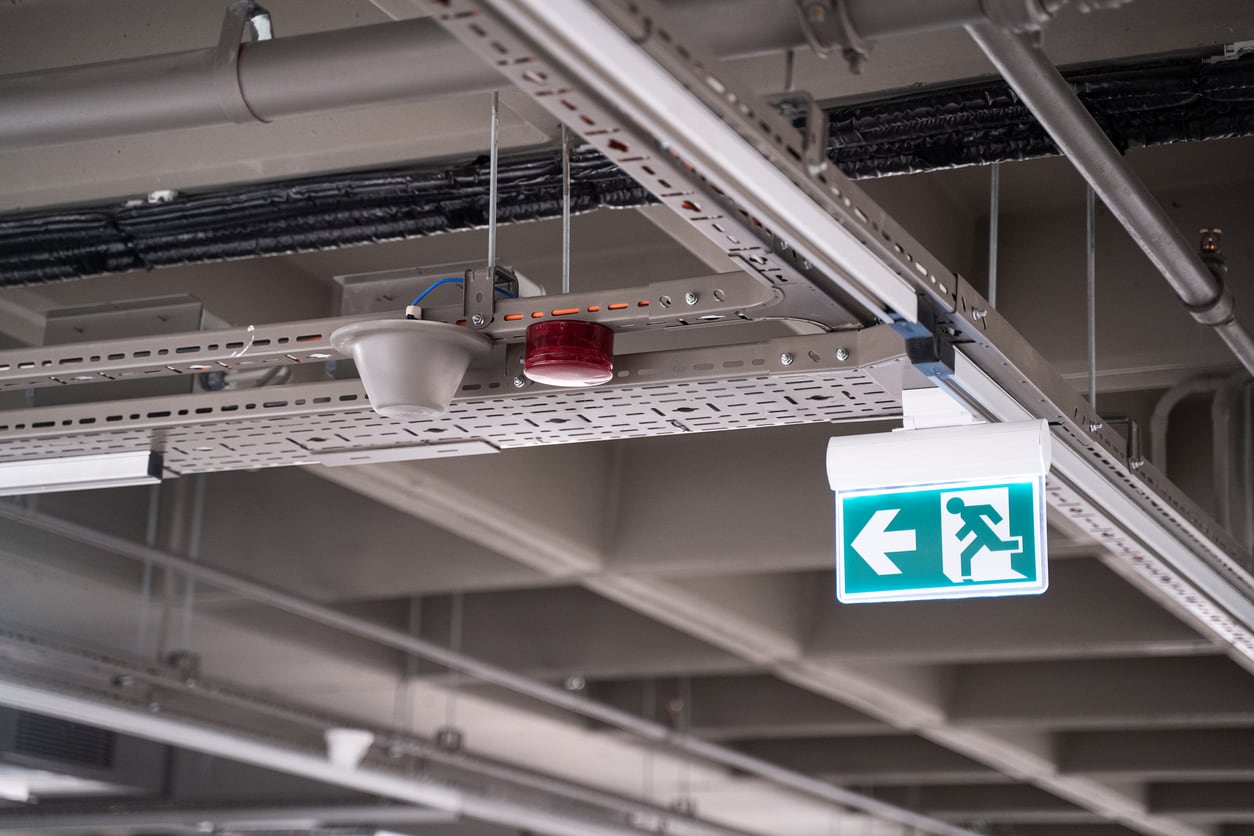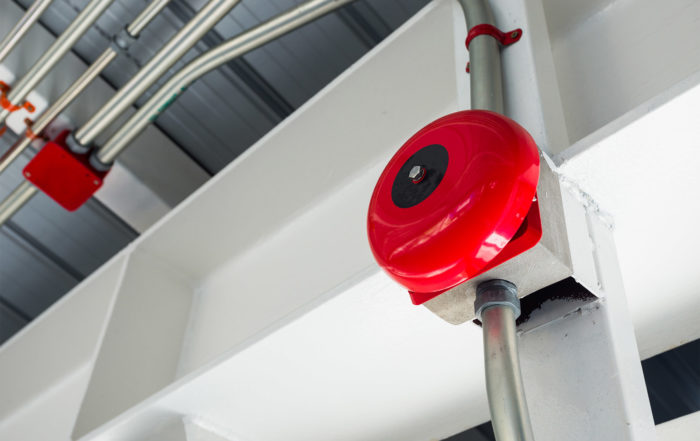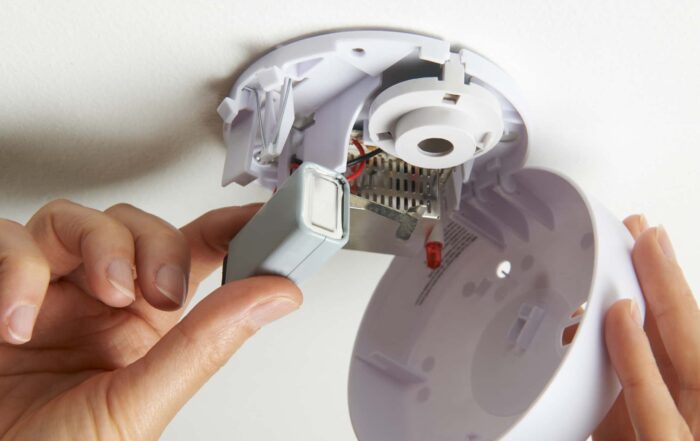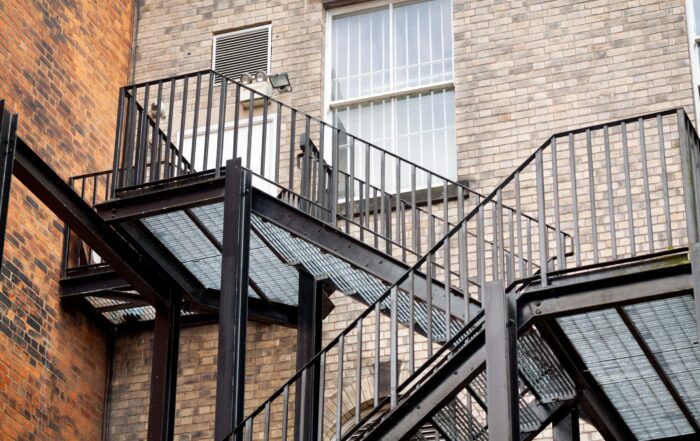The Ultimate Guide to Emergency Lighting
It is imperative to provide sufficient illumination within a building as it ensures the safety of those working within it. It enables the occupants to evacuate in case of an emergency or otherwise terminate any potential hazards prior to evacuation. The loss of normal illumination could happen as a result of a fire or a power cut, potentially leading to sudden darkness that needs to be prevented by emergency lighting that can be split into five distinctions:
- Emergency Escape Lighting – provides sufficient illumination so that all occupants can evacuate in the event of an emergency or attempt to terminate any potentially dangerous processes before evacuation. Emergency Escape Lighting is part of the fire safety provision of a building and a requirement of The Regularity Reform (Fire Safety) Order 2005.
- Standby Lighting – lighting that enables normal activities to continue substantially unchanged. It is not a legal requirement and is considered to be a feature that isn’t of great importance unless dependant on the use of the premises.
- Escape Route Lighting – Lighting that ensures the means of escape can be easily identified.
- Open Are or Anti-Panic Lighting – part of the escape lighting system and provides enough illumination to allow occupants to reach an area where the means of escape can be identified.
- High risk task area lighting – lighting that will provide sufficient illumination so that an operator can terminate a potentially dangerous process or carry out proper shut down procedures before evacuating the premises.
There are a further two types of emergency lighting systems: maintained and non-maintained. Maintained systems are individual luminaries that each incorporate a battery that is charged from the mains lighting supply. For example, this could be when the mains power is fully restored following an interruption, the luminary’s emergency lighting battery is fully recharged from the mains power supply. Non-maintained system individual luminaries incorporate a power back up supply that is independent of the mains supply. Maintained luminaries are only required in areas where the lighting is dimmed, for example in cinemas and theatres.
On completion of the work of instillation of an emergency lighting system, a completion certificate should be supplied by the installer to the occupier or owner of the premises. The Building Control should insist upon a copy of this certificate which should be retained with the Buildings Regulations application.
Read more about how the right emergency lighting can save lives >
What are the legal requirements for emergency lighting?
Current UK regulations require the provision of a horizontal illuminance at floor level on the centre line of a defined escape route not less than 0.2 lux. It is also important to consider the escape routes, which should be at least 2m wide with 50% of the route width being lit to a minimum of 0.1 lux. Adequate artificial lighting should be provided in all common escape routes and should be of a sufficient standard to enable persons to see to escape except parts of the building used by members of the public in a ground storey only restaurant, banqueting room, public house, bar or premises used for similar purpose, accommodating less than 100 persons and from which there are a sufficient number of final exits.
Where should emergency lighting be located?
Emergency lighting should be installed in all common areas and escape routes. Regulations state that any open area that is larger than 60 square meters should also have emergency lighting installed. It is recognised that during an emergency there is a high level of panic so having that area well-lit is important in preventing any further accidents. Additional regulations state that emergency lights should be fitted within 2m in horizontal distance above a fire alarm or firefighting appliance. This optimises worker’s environments by providing emergency lighting, allowing them to do their job as best as possible. It is also important to consider that there could be different emergency lighting requirements for different buildings, resulting in each building needing an assessment and a set of emergency lights developed accordingly.
Enhancing the aesthetics of emergency lighting
While emergency lighting is critical to life safety and must function to code, ruining the aesthetics of a building’s interior is definitely something that can be avoided with careful planning. Industry professionals are increasingly keeping the lights hidden or camouflaged until needed to ensure it artfully blends in with its surroundings. Fixtures can now be completely hidden behind closed-door panels on walls or ceilings, while still meeting the emergency lighting code. Only in the event of an emergency or power outage do the doors open and the emergency lights emerge to ensure sufficient light along the path of egress. For even greater discretion, the panels can be painted, wallpapered over and placed in locations out of sight to make them completely inconspicuous.
Design professionals often meticulously plan the aesthetics of various building elements, including style, form and materials in a wide range of structures. This can involve upscale hotels, resorts, restaurants, retail centres, office buildings as well as historic buildings, museums, city halls and state and federal buildings. The challenge occurs when the timeline is rushed and unfortunate compromises are made, altering the building’s aesthetics.
Emergency Lighting with Sovereign Fire & Security
Sovereign Fire and Security have more than a decade’s experience in working with commercial fire and security systems Get the ball rolling immediately by getting in contact today and speak to one of their friendly team members to answer any further questions you may have.
Recent Articles
What is an Automatic Fire Detection System? ( Cloned )
When it comes to choosing a fire detection system for your business, an automatic solution is often the best choice. Instead of waiting for human intervention, your system will provide [...]
Innovations and Regulations for Smoke Detection and Fire Alarms
Making sure your fire safety systems are up to standards saves lives, protects your building, and ensures you’re compliant with government regulations. However, with so many types of alarm systems [...]
Fire and Security – The Complete Guide to Fire Escape Regulations in the UK
Fire risks are real, with 622,173 incidents attended by Fire and Rescue Services in England for the year ending March 2023. Many things can keep you safe from fires. But [...]




